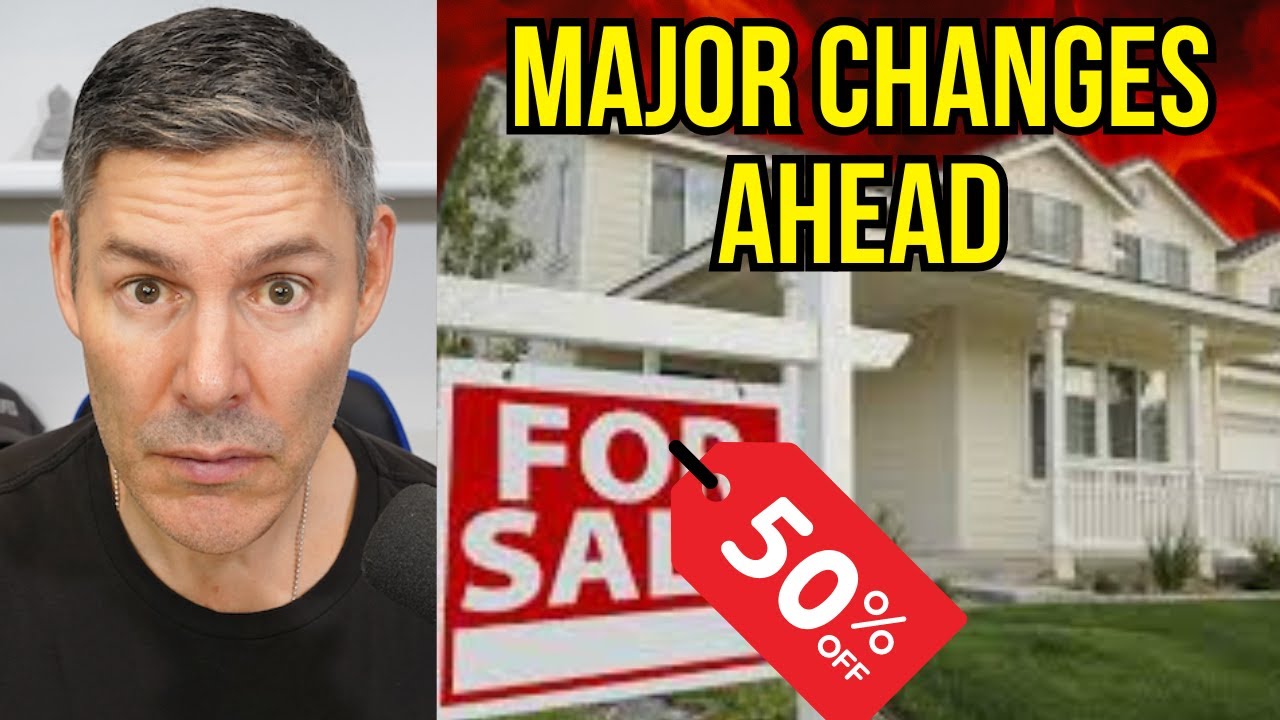Trading Spaces: Millennials and Boomers
Summary
TLDRIn this episode of 'Thoughts on the Market,' Ron Camam and Lauren Haw discuss the significant impact of demographic shifts on residential real estate. With Millennials now in their peak household formation years and Baby Boomers aging, there's a growing demand for single-family rentals and senior housing. The conversation highlights the need for investors to adapt to these changes, focusing on types of housing that align with the evolving needs of these generations, such as senior living facilities and suburban rentals, to capitalize on the current trends.
Takeaways
- 👥 Millennials, aged 28 to 43, are overtaking Baby Boomers, aged 59 to 78, as the largest demographic group, with 72 million vs. 69 million individuals.
- 🏠 Millennials traditionally favored multifamily and rental units in cities, while Baby Boomers have been predominantly homeowners in single-family homes.
- 🔄 As Millennials age, they require more space and services, leading to a shift in housing preferences towards single-family rentals and suburban locations.
- 👵 The demand for senior housing is on the rise, with a significant decrease in supply and a 'golden age' for this sector as the Baby Boomer population ages.
- 📉 New construction of senior housing has plummeted by 75% from its peak, indicating a potential oversupply of multifamily units and undersupplied single-family and senior housing.
- 💰 Seniors have the financial capability to afford senior living facilities due to long-term homeownership and appreciation in home values.
- 🔝 There's a growing preference among Millennials to rent rather than buy, influenced by affordability and a desire for mobility.
- 📈 Investment in single-family and senior housing is seen as attractive due to demographic trends, with potential for higher earnings growth in these sectors.
- 🌐 Regional shifts in housing demand are occurring, with significant growth in the Southeast and Texas, moving away from traditional hubs like San Francisco and New York.
- 🏥 The healthcare real estate space is expected to grow, with outpatient services increasing and Medicare expanding coverage for procedures outside hospitals.
Q & A
What is the current age range for Millennials and how many are there in the United States?
-Millennials are individuals between the ages of 28 and 43, and there are approximately 72 million of them in the United States.
How does the demographic shift between Millennials and Baby Boomers impact the residential housing market?
-The demographic shift impacts the residential housing market by creating a need for different types of housing. Millennials, reaching peak household formation years, require more space, while Baby Boomers, approaching their 80s, demand more services and housing with increased care options.
What are the current housing preferences of Baby Boomers?
-Baby Boomers have been disproportionately residing in single-family homes that they own and have owned for a long time.
What changes in housing needs are Millennials experiencing as they age?
-As Millennials age, they need more space, which shifts their preference from multifamily to single-family rentals. Additionally, there's a migratory shift towards regions like the Southeast and Texas, and a general preference to rent rather than buy.
What is the current state of the senior housing market in terms of demand and supply?
-The senior housing market is considered to be in a 'golden age' with a significant increase in demand as the Baby Boomer population ages. However, supply has decreased, with new construction falling by 75% from its peak.
How has the perception of senior housing changed among the older population?
-Historically, seniors have shied away from senior housing, but there's an opportunity for increased penetration as affordability and the appreciation of home prices have put seniors in a position to afford senior living facilities.
What are the two main secular trends in the US public Real Estate Investment Trust (REIT) universe?
-The two main secular trends are the rise of senior housing communities and the move of outpatient services outside of the hospital setting.
What concerns are there regarding the senior housing industry?
-The concerns include labor shortages in the healthcare space and the age of facilities, with many being over 40 years old and potentially not providing the best experience for tenants.
Which segment of the REIT market is most compelling for investment in the context of the senior housing trend?
-The senior housing sector within the REIT market is most compelling, with expected earnings growth of 10% or more over the next three to five years, compared to the average market growth of 3 to 4%.
How are real estate owners adapting to cater to the Millennial generation?
-Real estate owners are integrating their platforms to be more Millennial-friendly by investing in online marketing, web presence, and mobile-friendly apps to facilitate customer acquisition and interface with the Millennial demographic.
Outlines

Этот раздел доступен только подписчикам платных тарифов. Пожалуйста, перейдите на платный тариф для доступа.
Перейти на платный тарифMindmap

Этот раздел доступен только подписчикам платных тарифов. Пожалуйста, перейдите на платный тариф для доступа.
Перейти на платный тарифKeywords

Этот раздел доступен только подписчикам платных тарифов. Пожалуйста, перейдите на платный тариф для доступа.
Перейти на платный тарифHighlights

Этот раздел доступен только подписчикам платных тарифов. Пожалуйста, перейдите на платный тариф для доступа.
Перейти на платный тарифTranscripts

Этот раздел доступен только подписчикам платных тарифов. Пожалуйста, перейдите на платный тариф для доступа.
Перейти на платный тарифПосмотреть больше похожих видео

Proptech: The Future of Real Estate or a Crash Waiting to Happen?

"30억 줘도 못사" '잠삼대청' 급등하게 된 이유는?

Full Episode: What's happening in Indian Real Estate ? Paisa Vaisa Podcast ft. K Raheja Corp Homes

Global Real Estate Markets Could Implode (Here's Why)

Indian Real Estate Market Insights | Paisa Vaisa Podcast Ft. @knightfrankindia8592 #financepodcast

Special Episode: 2024 Real Estate Investing Outlook with Brian Kingston and Lowell Baron
5.0 / 5 (0 votes)
